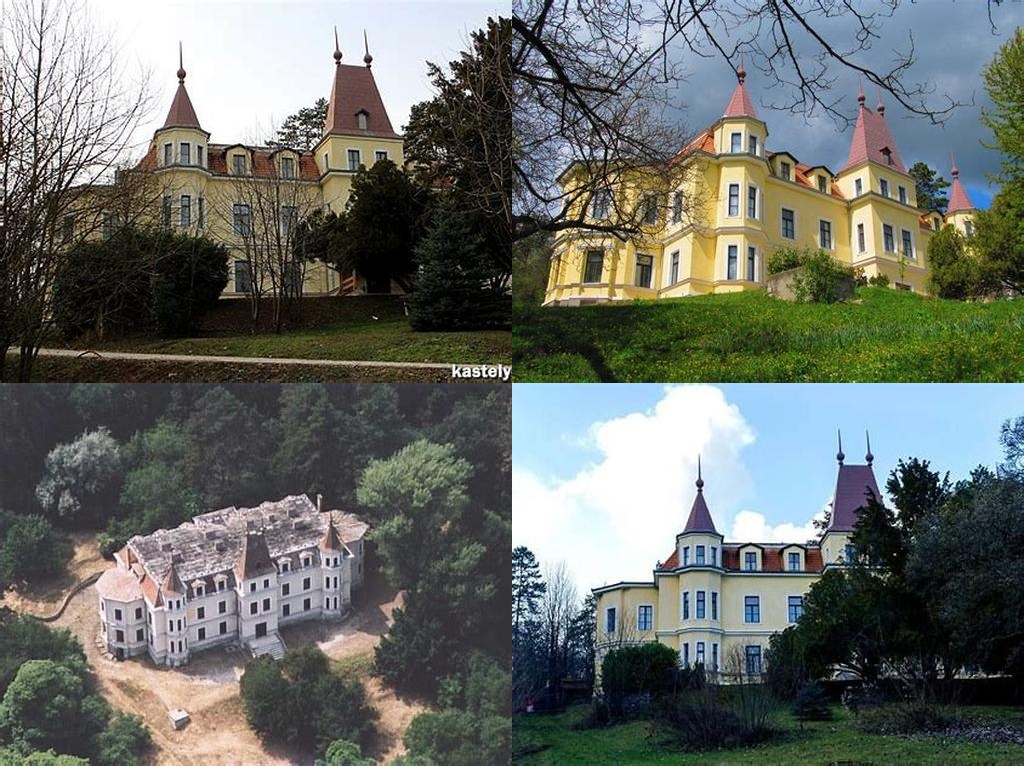
Margitligeti kastély in the village of Csobánka is not the kind of grandiose palace that appears on every postcard, yet it is exactly this gentle understatement that draws you in. Set against the rolling hills of the Pilis region, the former aristocratic retreat has a kind of lived-in charm, trading the glamour of historic ballrooms for the subtle beauty of creaking floorboards, warm sunlight on stucco, and stories that seem to hang in the air just waiting to be overheard. While it’s easy to bypass it on your way to more famous destinations like Budapest or Esztergom, Margitligeti kastély rewards those who value discovery over spectacle.
The story of the palace is quietly fascinating, and you can feel its layered history in every corner. Built in the second half of the 19th century, the Kastély was initially commissioned by the esteemed Makray family, local nobility with a fondness for serene landscapes and “multiple uses” – which, in this setting, ranged from family gatherings and hunting parties to much-needed peaceful retreats. The Margitligeti name itself is a nod to one of the family’s daughters, not unlike the way Margitsziget in Budapest was named after a royal Margaret, only with just the right amount of countryside humility. Over time, the estate found itself subtly transformed, reflecting the tastes of its various inhabitants without ever completely turning its back on what was built before.
As you approach the castle, tucked among chestnut trees and framed by lush meadows, it’s clear the architects weren’t trying to outdo Versailles. Instead, there’s an inviting honesty about the manor—a mixture of Classicist and Neo-Renaissance influences in the façade, softened by Hungary’s changing seasons. Even in the sunlight, shadows gather beneath deep eaves, and antique vines climb quietly, as if in conversation with the latticed windows. What was once manicured garden is now a pleasantly wild patchwork of grass and perennials, a setting that feels perfect for lazy walks in the late afternoon. Artfully peeling paint and the patina of age never seem to detract from its appeal; if anything, they add to its story, as if the building has decided to age on its own terms.
Inside, the palace’s atmosphere invites you to wander, linger, and imagine. The main halls are modest, with ceiling medallions and the sort of doors that beg to be opened slowly. Sit on a squeaky bench by the window and the filtered light is somehow softer, more personal—little wonder that artists and writers from Buda and Pest once came here seeking escape from city bustle. In fact, the estate’s golden era coincided with the early 20th century, when it became known as a social hub in the region. There are still whispers of those times in family portraits and the occasionally uncovered artifact: a carefully kept letter, a faded photograph, even a worn-down book of poetry. All of it lends a sense of intimacy that grander, more impeccably preserved palaces rarely manage to convey.
One of Margitligeti kastély’s loveliest quirks is its connection with the surrounding nature. Step outside, and you’re immediately greeted by the gentle slopes and birch-dotted meadows of the Pilis Mountains. The castle grounds shift easily into unmanaged woodland, with hiking trails leading up to panoramic viewpoints over Csobánka and beyond. In the stillness, you can hear the distant call of birds, the rustle of deer, and, if you’re lucky, the laughter of locals gathering wild herbs in the glade. For many visitors, this parallel between cultural curiosity and natural adventure is what makes a simple day trip to Margitliget feel like a genuine escape.
While the palace itself is no longer the private stronghold it once was—having survived wars, changing borders, even serving briefly as a community center in the socialist era—it remains endearingly open to transformation. Community events, open-air concerts, and even small exhibitions now breathe new life into the property, inviting both villagers and visitors to experience its charm in new ways. There’s a lived-in warmth here that is hard to fake, and no matter when you arrive, it’s easy to sense the gentle pull of history.
If you’re the sort of traveler who prefers reading old guestbooks to queuing for guided tours, or who believes that a place’s spirit can linger long after paint peels and grand reputations fade, Margitligeti kastély in Csobánka may well become your hidden favorite. It is a palace not of pomp, but of stories—best discovered slowly, and with an open mind.





